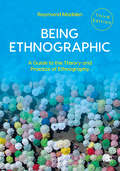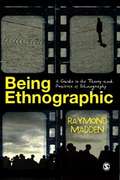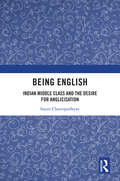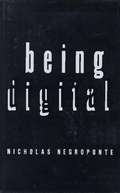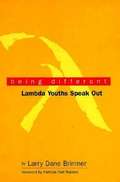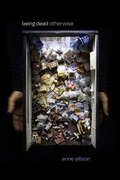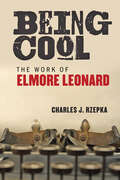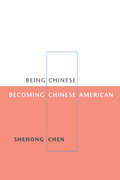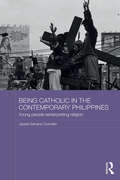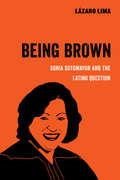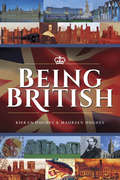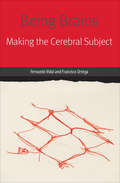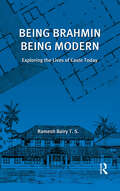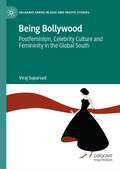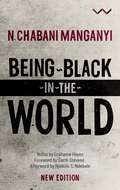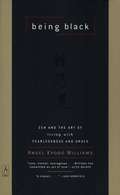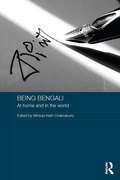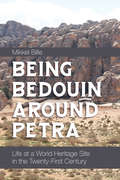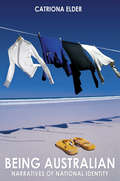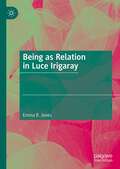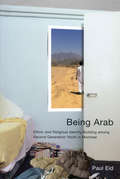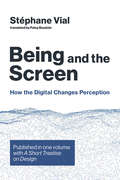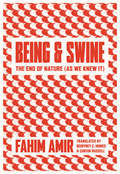- Table View
- List View
Being Ethnographic: A Guide to the Theory and Practice of Ethnography
by Raymond MaddenBeing Ethnographic is a fundamental introductory guidebook to process and utilization of doing fieldwork within real-world settings. It explores our understanding of identities, the future of ethnography and the advancing role of technology in a global, networked society. The third edition of Being Ethnographic highlights the challenges introduced by the ethnographers′ own interests, biases and ideologies and demonstrates the importance of methodological reflexivity. This fully updated third edition includes: Discussions on technology and multimodality as hands-on tools for the field Helpful insights into making thoughtful choices around a research design Aid in engaging ethically and effectively within the field Lasting tips for finalising and conducting research Raymond Madden provides invaluable guidance for applying fundamental ethnographic principles within the field and gives students and researchers everything they need to walk a mile in someone else′s shoes.
Being Ethnographic
by Raymond MaddenFull of practical 'how to' tips for applying theoretical methods - 'doing ethnography' - this book also provides anecdotal evidence and advice for new and experienced researchers on how to engage with their own participation in the field - 'being ethnographic'. The book clearly sets out the important definitions, methods and applications of field research whilst reinforcing the infinite variability of the human subject and addressing the challenges presented by ethnographers' own passions, intellectual interests, biases and ideologies. Classic and personal real-world case studies are used by the author to introduce new researchers to the reality of applying ethnographic theory and practice in the field. Topics include: - Talking to People: negotiations, conversations & interviews - Being with People: participation - Looking at People: observations & images - Description: writing 'down' field notes - Analysis to Interpretation: writing 'out' data - Interpretation to Story: writing 'up' ethnography Clear, engaging and original this book provides invaluable advice as well as practical tools and study aids for those engaged in ethnographic research.
Being English: Indian Middle Class and the Desire for Anglicisation
by Sayan ChattopadhyayThis book critically examines the cultural desire for anglicisation of the Indian middle class in the context of postcolonial India. It looks at the history of anglicised self-fashioning as one of the major responses of the Indian middle class to British colonialism. The book explores the rich variety of nineteenth- and twentieth-century writings that document the attempts by the Indian middle class to innovatively interpret their personal histories, their putative racial histories, and the history of India to appropriate the English language and lay claim to an “English” identity. It discusses this unique quest for “Englishness” by reading the works of authors like Michael Madhusudan Dutt, Rabindranath Tagore, Cornelia Sorabji, Nirad C. Chaudhuri, Dom Moraes, and Salman Rushdie. An important intervention, this book will be of interest to scholars and researchers of postcolonial studies, Indian English literature, South Asian studies, cultural studies, and English literature in general.
Being Digital
by Nicholas NegroponteA Professor of MIT and former director of its Media lab expounds on his philosophy and opinions of the digital world.
Being Different: Lambda Youths Speak Out
by Larry Dane BrimnerThe lives of gay, lesbian, and bisexual youths are too often veiled in secrecy and fear. This book gives voice to that invisible community as youths speak out about their fears, relationships, hopes, and expectations. Their narratives are tied together with Mr. Brimner's own experiences and sensitive commentary.
Being Dead Otherwise
by Anne AllisonWith an aging population, declining marriage and childbirth rates, and a rise in single households, more Japanese are living and dying alone. Many dead are no longer buried in traditional ancestral graves where descendants would tend their spirits, and individuals are increasingly taking on mortuary preparation for themselves. In Being Dead Otherwise Anne Allison examines the emergence of new death practices in Japan as the old customs of mortuary care are coming undone. She outlines the proliferation of new industries, services, initiatives, and businesses that offer alternative means---ranging from automated graves, collective grave sites, and crematoria to one-stop mortuary complexes and robotic priests---for tending to the dead. These new burial and ritual practices provide alternatives to long-standing traditions of burial and commemoration of the dead. In charting this shifting ecology of death, Allison outlines the potential of these solutions to radically reorient sociality in Japan in ways that will impact how we think about the end of life, identity, tradition, and culture in Japan and beyond.
Being Cool: The Work of Elmore Leonard
by Charles J. RzepkaAn in-depth look into the life and work of the man who defined "cool" for crime fiction, Elmore Leonard.Widely known as the crime fiction writer whose work led to the movies Get Shorty and Out of Sight, Elmore Leonard had a special knack for creating "cool" characters. In Being Cool, Charles J. Rzepka looks at what makes the dope-dealers, bookies, grifters, financial advisors, talent agents, shady attorneys, hookers, models, and crooked cops of Leonard's world cool. They may be nefarious, but they are also confident, skilled, and composed. And they are good at what they do. Taking being cool as the highway through Leonard's life and works, Rzepka finds plenty of byways to explore along the way.Rzepka delineates the stages and patterns that characterize Leonard’s creative evolution. Like jazz greats, he forged an individual writing style immediately recognizable for its voice and rhythm, including his characters' rat-a-tat recitations, curt backhands, and ragged trains of thought. Rzepka draws on more than twelve hours of personal interviews with Leonard and applies what he learned to his close analysis of the writer’s long life and prodigious output: 45 published novels, 39 published and unpublished short stories, and numerous essays written over the course of six decades.
Being Chinese, Becoming Chinese American (Asian American Experience)
by Shehong ChenThe 1911 revolution in China sparked debates that politicized and divided Chinese communities in the United States. People in these communities affirmed traditional Chinese values and expressed their visions of a modern China, while nationalist feelings emboldened them to stand up for their rights as an integral part of American society. When Japan threatened the China's young republic, the Chinese response in the United States revealed the limits of Chinese nationalism and the emergence of a Chinese American identity. Shehong Chen investigates how Chinese immigrants to the United States transformed themselves into Chinese Americans during the crucial period between 1911 and 1927. Chen focuses on four essential elements of a distinct Chinese American identity: support for republicanism over the restoration of monarchy; a wish to preserve Confucianism and traditional Chinese culture; support for Christianity, despite a strong anti-Christian movement in China; and opposition to the Nationalist party's alliance with the Soviet Union and cooperation with the Chinese Communist Party. Sensitive and enlightening, Being Chinese, Becoming Chinese American documents how Chinese immigrants survived exclusion and discrimination, envisioned and maintained Chineseness, and adapted to American society.
Being Catholic in the Contemporary Philippines: Young People Reinterpreting Religion (Routledge Religion in Contemporary Asia Series)
by Jayeel Serrano CornelioThis book, based on extensive original research, examines the nature of Catholicism in the contemporary Philippines. It shows how Catholicism is apparently flourishing, with good attendance at Sunday Masses, impressive religious processions and flourishing charismatic groups, and with interventions by the Catholic hierarchy in national and local politics. However, focusing in particular on the beliefs and practices of young people, the book shows that young people are often adopting a different, more individualised approach to Catholicism, which is frequently out of step with the official position. It considers the features of this: a more personal and experiential relationship with God; a new approach to morality, in which right living is seen as more important than right believing; and a critical view of what is seen as the Catholic hierarchy's misguidedness. The book argues that this reinterpreting of religion by young people has the potential to alter fundamentally the nature of Catholicism in the Philippines, but that, nevertheless, young people's new approach involves a solid, enduring commitment and a strong view of their own Catholic, religious identity.
Being Brown: Sonia Sotomayor and the Latino Question (American Studies Now: Critical Histories of the Present #9)
by Lázaro LimaBeing Brown: Sonia Sotomayor and the Latino Question tells the story of the country’s first Latina Supreme Court Associate Justice’s rise to the pinnacle of American public life at a moment of profound demographic and political transformation. While Sotomayor’s confirmation appeared to signal the greater acceptance and inclusion of Latinos—the nation’s largest “minority majority”—the uncritical embrace of her status as a “possibility model” and icon paradoxically erased the fact that her success was due to civil rights policies and safeguards that no longer existed. Being Brown analyzes Sotomayor’s story of success and accomplishment, despite seemingly insurmountable odds, in order to ask: What do we lose in democratic practice when we allow symbolic inclusion to supplant the work of meaningful political enfranchisement? In a historical moment of resurgent racism, unrelenting Latino bashing, and previously unimaginable “blood and soil” Nazism, Being Brown explains what we stand to lose when we allow democratic values to be trampled for the sake of political expediency, and demonstrates how understanding “the Latino question” can fortify democratic practice. Being Brown provides the historical vocabulary for understanding why the Latino body politic is central to the country’s future and why Sonia Sotomayor’s biography provides an important window into understanding America, and the country’s largest minority majority, at this historical juncture. In the process, Being Brown counters “alternative facts” with historical precision and ethical clarity to invigorate the best of democratic practice at a historical moment when we need it most.
Being British
by Kieran Hughes Maureen HughesA smashing guide to the customs, history, and idiosyncrasies of Great Britain—from geography and landmarks to education, food, language, and royalty. Being British is the perfect book for everyone who lives (or wishes they lived) in our wonderful country. Here the British will discover what they already suspected, and that is that many of the GREAT historical figures of all time were British, many of the GREATEST inventions were British, as well as many other patriotic facts. They will also be reminded of all great and unique customs and traditions inherent in our beautiful land, and probably learn of some they never knew existed too, as well as laughing at the things that only The British could do! Being British is also an excellent companion for all tourists and new inhabitants who are struggling to come to terms with and understand the way in which we British live and conduct ourselves and our lives. &“As it gives a &‘once-over lightly&’ introduction to &‘British&’ culture, this volume will probably have wide appeal. Tourists and potential immigrants are likely to peruse it with great and earnest interest.&” —NZ Crown Mines
Being Brains: Making the Cerebral Subject (Forms Of Living Ser.)
by Fernando Vidal Francisco OrtegaBeing Brains offers a critical exploration of one of the most influential and pervasive contemporary beliefs: “We are our brains.” Starting in the “Decade of the Brain” of the 1990s, “neurocentrism” became widespread in most Western and many non-Western societies. Formidable advances, especially in neuroimaging, have bolstered this “neurocentrism” in the eyes of the public and political authorities, helping to justify increased funding for the brain sciences. The human sciences have also taken the “neural turn,” and subspecialties in fields such as anthropology, aesthetics, education, history, law, sociology, and theology have grown and professionalized at record speed. At the same time, the development of dubious but successful commercial enterprises such as “neuromarketing and “neurobics” have emerged to take advantage of the heightened sensitivity to all things neuro. Skeptics have only recently begun to react to the hype, invoking warnings of neuromythology, neurotrash, neuromania, and neuromadness. While this neurocentric view of human subjectivity is neither hegemonic nor monolithic, it embodies a powerful ideology that is at the heart of some of today’s most important philosophical, ethical, scientific, and political debates. Being Brains critically explores the internal logic of such ideology, its genealogy, and its main contemporary incarnations.
Being Brahmin, Being Modern: Exploring the Lives of Caste Today
by Ramesh BairyThere is clearly an academic and political obsession with the ‘idea’ of the Brahmin. There is also, simultaneously, a near-complete absence of engagement with the Brahmin as an embodied person or community. This book addresses this intriguing paradox by making available a sociological description of the Brahmins in today’s Karnataka. It pursues three distinct, yet enmeshed, registers of inquiry – the persona of the ‘Brahmin’ embodied in the agency of the individual Brahmin; the organised complexes of action such as the caste association and the public culture of print; and finally, taking off from a longer (yet, modern and contemporary) history of non-Brahminical othering of the Brahmin. It argues that we tend to understand the contemporaneity of caste almost exclusively within the twin registers of legitimation–contestation and dominance–resistance. While these facets continue to be salient, there is also a need to push out into hitherto neglected dimensions of caste. The book focuses attention on the many lives of modern caste — its secularisation, the subject positions that it offers, the equivocations by which persons and communities become ‘subjects’ of caste, their differential investments in the caste-self.
Being Bollywood: Postfeminism, Celebrity Culture and Femininity in the Global South (Palgrave Series in Asia and Pacific Studies)
by Viraj SuparsadThrough engaging media coverage of the public lives of Bollywood actresses, this book unveils understandings of idealized femininity and gender within this cultural context. Beyond its own borders, such a context is unique given the global relevance of content from and about Bollywood with members of the diaspora as well as those culturally Indian individuals that are no longer part of the diaspora. This book thus engages these actresses as global Indian celebrities who are framed and presented as contemporary urban Indian exemplars of gender via media coverage about them. The book therefore offers a robust and detailed case study of the Bollywood star system so as to demonstrate how the nuances of this unique cultural context influence the dimensions of postfeminism and celebrity culture therein.
Being Black
by Angel Kyodo WilliamsBeing Black has gained an enthusiastic following in African American and Zen communities. Angel Kyodo Williams shows black Americans how to develop a "warrior-spirit" of truth and responsibility that can lead to happiness and personal transformation. The principles and tools she offers provide a framework for addressing the African American community's unique worries, hopes, challenges, and expectations. Williams uses an eloquent, hip, and honest approach to share personal stories, time-tested teachings, and simple guidelines that invite readers of all faiths to discover how to step into the freedom of a life lived with fearlessness, grace, and fluidity.
Being Bengali: At Home and in the World (Routledge Contemporary South Asia Series)
by Mridula Nath ChakrabortyBengal has long been one of the key centres of civilisation and culture in the Indian subcontinent. However, Bengali identity – "Bengaliness" – is complicated by its long history of evolution, the fact that Bengal is now divided between India and Bangladesh, and by virtue of a very large international diaspora from both parts of Bengal. This book explores a wide range of issues connected with Bengali identity. Amongst other subjects, it considers the special problems arising as a result of the division of Bengal, and concludes by demonstrating that there are many factors which make for the idea of a Bengali identity.
Being Bedouin Around Petra: Life at a World Heritage Site in the Twenty-First Century
by Mikkel BillePetra, Jordan became a UNESCO World Heritage site in 1985, and the semi-nomadic Bedouin inhabiting the area were resettled as a consequence. The Bedouin themselves paradoxically became UNESCO Masterpieces of Oral and Intangible Heritage in 2005 for the way in which their oral traditions and everyday lives relate to the landscape they no longer live in. Being Bedouin Around Petra asks: How could this happen? And what does it mean to be Bedouin when tourism, heritage protection, national discourse, an Islamic Revival and even New Age spiritualism lay competing claims to the past in the present?
Being Bedouin Around Petra: Life at a World Heritage Site in the Twenty-First Century
by Mikkel BillePetra, Jordan became a UNESCO World Heritage site in 1985, and the semi-nomadic Bedouin inhabiting the area were resettled as a consequence. The Bedouin themselves paradoxically became UNESCO Masterpieces of Oral and Intangible Heritage in 2005 for the way in which their oral traditions and everyday lives relate to the landscape they no longer live in. Being Bedouin Around Petra asks: How could this happen? And what does it mean to be Bedouin when tourism, heritage protection, national discourse, an Islamic Revival and even New Age spiritualism lay competing claims to the past in the present?
Being Australian: Narratives of national identity
by Catriona ElderAfter a century of speculation by writers, filmmakers, travelers and scholars, being Australian' has become a recognisable shorthand for a group of national characteristics. Now, in an era of international terrorism, being seen as un-Australian' has become a potent rhetorical weapon for some, and a badge of honour for others.Catriona Elder explores the origins, meaning and effects of the many stories we tell about ourselves, and how they have changed over time. She outlines some of the traditional stories and their role in Australian nationalism, and she shows how concepts of egalitarianism, peaceful settlement and sporting prowess have been used to create a national identity. Elder also investigates the cultural and social perspectives that have been used to critique dominant accounts of Australian identity, including ideas of class, gender, sexuality, ethnicity and race. She shows how these critiques have been, in turn, queried in recent years. Being Australian is an ideal introduction to studying Australia for anyone interested in understanding Australian society, culture and history. A clever work: incisive and original. At a time when Australian identities have never been more debated, Elder finds an open way through the closed doors which often restrict cultural representations of Australian-ness.'Professor Adam Shoemaker, Dean of Arts, ANU This is a timely and significant new analysis essential reading on issues of identity and our own anxieties about national belonging and what it means to be Australian' in a globalising world.'Kate Darian-Smith, Professor of Australian Studies and History, University of Melbourne
Being as Relation in Luce Irigaray
by Emma R. JonesMany scholars have struggled with Irigaray’s focus on sexuate difference, in particular with her claim that it is “ontological,” wondering if this implies a problematically naïve or essentialist account of sexuate difference. As a result, the ethical vision which Irigaray elaborates has not been taken up in a robust way in the fields of philosophy, feminism, or psychoanalysis.By tracing the notion of relation throughout Irigaray’s work, this book identifies a rigorous philosophical continuity between the three self-identified “phases” in Irigaray’s thought (despite some critics’ concerns that there is a discontinuity between these phases) and clarifies the relational ontology that underlies Irigaray’s conceptualization of sexuate difference – one that always already implies an ethical project.The text demonstrates that an understanding of Irigaray’s Heideggerian inheritance – especially prominent in her later texts – is essential to grasping the sense of the idea that sexuate difference is ontological – it concerns Being, rather than beings. This book further develops potential applications of this ontological notion of a “relational limit” for the fields of philosophy, feminism, and psychotherapy.
Being Arab
by Paul EidEid looks at the significance of religion to ethnic identity building, a largely understudied issue in ethnic studies, and the extent to which social and cultural practices are structured along ethnic and religious lines. Being Arab also analyzes whether gendered traditions act as identity markers for young Canadians of Arab descent and whether men and women hold different views on traditional gender roles, especially regarding power within romantic relationships and sexuality.
Being Arab: Ethnic and Religious Identity Building among Second Generation Youth in Montreal (McGill-Queen's Studies in Ethnic History #110)
by Paul EidEid looks at the significance of religion to ethnic identity building, a largely understudied issue in ethnic studies, and the extent to which social and cultural practices are structured along ethnic and religious lines. Being Arab also analyzes whether gendered traditions act as identity markers for young Canadians of Arab descent and whether men and women hold different views on traditional gender roles, especially regarding power within romantic relationships and sexuality.
Being and the Screen: How the Digital Changes Perception. Published in one volume with A Short Treatise on Design (Design Thinking, Design Theory)
by Stephane VialHow digital technology is profoundly renewing our sense of what is real and how we perceive.Digital technologies are not just tools; they are structures of perception. They determine the way in which the world appears to us. For nearly half a century, technology has provided us with perceptions coming from an unknown world. The digital beings that emerge from our screens and our interfaces disrupt the notion of what we experience as real, thereby leading us to relearn how to perceive. In Being and the Screen, Stéphane Vial provides a philosophical analysis of technology in general, and of digital technologies in particular, that relies on the observation of experience (phenomenology) and the history of technology (epistemology). He explains that technology is no longer separate from ourselves—if it ever was. Rather, we are as much a part of the machine as the machine is part of us. Vial argues that the so-called difference between the real and the virtual does not exist and never has. We are living in a hybrid environment—which is both digital and nondigital, online and offline. With this book, Vial endows philosophical meaning to what we experience daily in our digital age.In A Short Treatise on Design, Vial offers a concise introduction to the discipline of design—not a history book, but a book built of philosophical problems, developing a theory of the effect of design.This book is published with the support of the University of Nîmes, France.
Being and Swine: The End of Nature (As We Knew It)
by Fahim AmirForget everything you think you know about nature. Fahim Amir’s award-winning book takes pure delight in posing unexpected questions: Are animals victims of human domination, or heroes of resistance? Is nature pristine and defenceless, or sentient and devious? Is being human really a prerequisite for being political? In a world where birds on Viagra punch above their weight and termites hijack the heating systems of major cities, animals can be recast as vigilantes, agitators, and public enemies in their own right. Under Amir’s magic spell, pigs transform from slaughterhouse innocents into rioting revolutionaries, pigeons from urban pests into unruly militants, honeybees from virtuous fuzzballs into shameless centrefold models for eco-capitalism. As paws, claws, talons, and hooves seize the means of production, Being and Swine spirals higher and higher into a heady thesis that becomes more convincing by the minute. At the heart of Amir’s writing is a deep optimism and bracingly fresh reading of Marxist, post-colonial, and feminist theory, building upon the radical scholarship of Donna J. Haraway and others. Contrarian, whip-smart, and wildly innovative, no other book will laugh at your convictions quite like this one.
